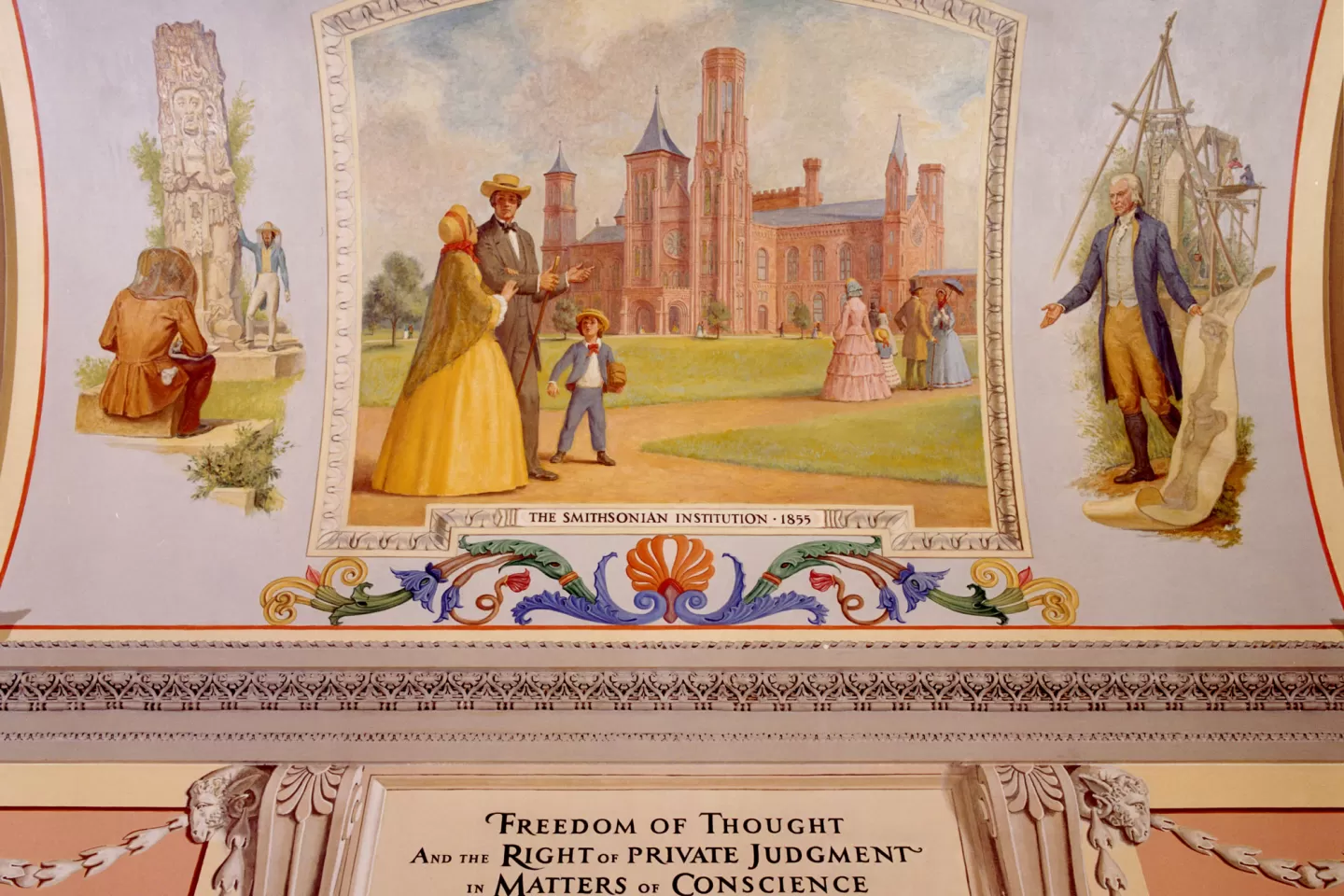The Smithsonian Institution, which today includes approximately two dozen museums and research centers, was founded in 1846. It was named for English scientist James Smithson, who bequeathed his estate to the United States to create an establishment "for the increase and diffusion of knowledge among men." This mural shows the Smithsonian's red sandstone "castle," which opened in 1855.
Left: American author John Lloyd Stephens and English illustrator Frederick Catherwood explore Central American ruins in 1839. This vignette and the one at the right symbolize the spirit of scientific inquiry that the Smithsonian Institute would embody.
Right: Charles Willson Peale excavates a mastodon skeleton near Newburg, Pennsylvania, in 1802.
About the Cox Corridors Murals
The first floor of the U.S. Capitol's House wing is elaborately decorated with wall and ceiling murals by artist Allyn Cox. The central east-west corridor is referred to as the Great Experiment Hall because it chronicles in 16 murals the legislative milestones of three centuries, from the signing of the Mayflower Compact in 1629 to the enactment of women's suffrage in 1920.
